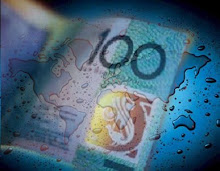


THIS IS THE RARE $10 (PURPLE) BANKNOTE ISSUED IN 1940 IN AVF CONDITION. NO WASH, NO HOLE.
The Board of Commissioners of Currency Malaya commissioned Waterlow and Sons to design and print a new set of bank notes with the portrait of King George 6th., for use in the Straits Settlements and Malaya States.
A set of proofs, printed on watermarked bank note paper and dated 1st. January, 1939 were prepared. The proofs were $1 in Green, $5 in Blue and $10 in Purple. The Proofs were accepted and the bank notes were printed with the 1st. January, 1940 date.
The $10 (purple) were shipped to Malaya and issued to the general public.
The $1 and $5 bank notes were being shipped separately to British Malaya by the merchantman Automedon but were lost on 11th. November, 1940 to the German raider Atlantis in the Indian Ocean. The bank notes were sent to Japan. Subsequently, a few bank notes were apparently issued by the Japanese during their occupation of Malaya.
In 1945, after the surrender of the Japanese and the return of the British, the bank notes issued had the same design but the colours assigned had been changed. The $1 had been changed from Green to Blue, the $5 from Blue to Green and the $10 from Purple to Red. The bank notes were dated 1st. July, 1941
Observations on the $10 issues.
| Serial numbers | PURPLE | A/1 000001 to A/83 0xxxxx |
| BROWN | A/84 064729 to A/84 064729 | |
| RED | A/85 040551 to J/? |
Table 1
All serial numbers start with zero, therefore only 100,000 per block letter/number.
Here is a scenario that probably took place in the 12 months prior to the British surrender of Singapore on 15th. February, 1942.
In 1941 there was a need for more $10 bank notes, but after the $1 Green and $5 Blue were lost to the Germans in November, 1940, contingency plans for additional security had to be made, in case another shipment of bank notes was to be captured.
As a result, the Purple $10 was discontinued and replaced by the BROWN issue, which was printed in England, and 100,000 bank notes with the serial prefix A/84 were shipped to Malaya and ISSUED BEFORE the Japanese invasion. Obviously, not many got into the hands of the general public.
The Japanese invaded Malaya on 7th. December, 1941 and when it was apparent that the surrender was inevitable, an order was made to destroy all stocks of bank notes in the vaults of the BCCM.
There was another Brown $10 in circulation before the war.
Could the brown be issued after the war?
Unlikely, as it is a well known fact that the RED $10 was the issue.
Could the colour been chemically changed from RED to BROWN?
Unlikely, as the lowest known is A/85.
Could the colour been chemically changed from PURPLE to BROWN?
Unlikely, but if so, then we will have the discovery of a PURPLE $10 dated 1st. July, 1941.
From the above, this $10 Purple Banknote was scarce as many were "lost" during the war and were replaced by the $10 Red banknote which is commonly found.












